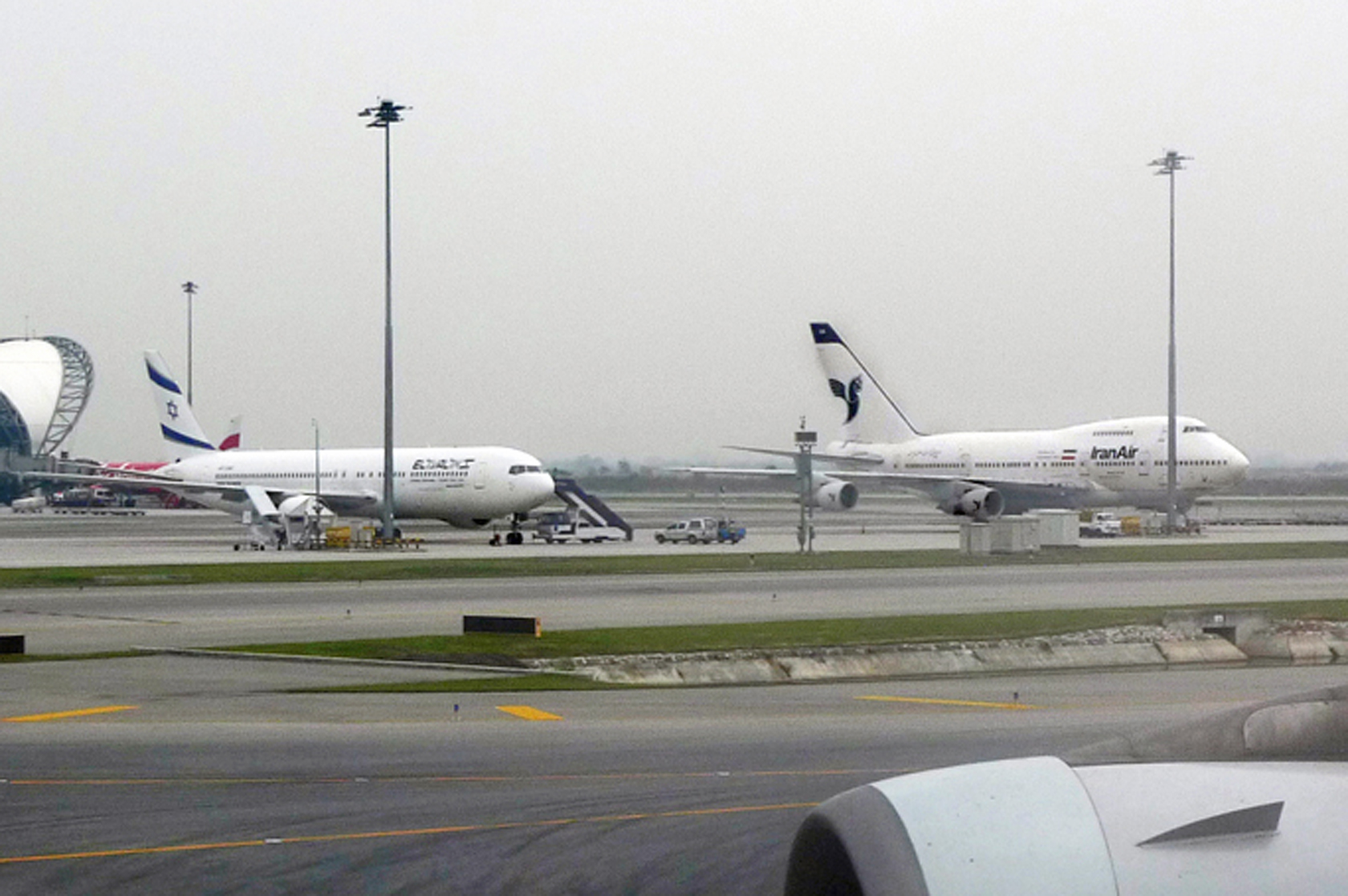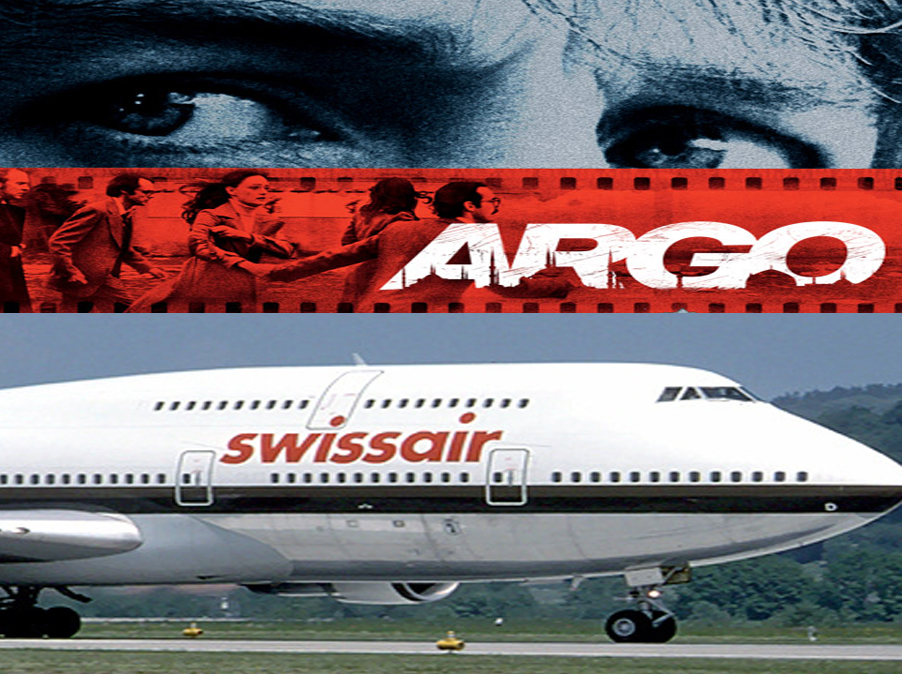Crossovers
When Culture and Air Travel Intersect
Crossovers. That’s my name for those moments when history, culture, art or politics intersect unexpectedly with commercial aviation. They underscore the many ways, not always recognized, that air travel touches our lives.
This will be an ongoing series. I’ll add to it as opportunities come up.
— NEW: AEROPOLITICS

This one speaks for itself. A 767 of El Al, the Israeli carrier, buddy-buddy with an Iran Air 747 at Bangkok’s Suvarnabhumi Airport. I took this photo a decade ago, but the theme couldn’t be more timely.
Was this by accident, do you think, or were the authorities at BKK pushing for a sort of tarmac detente?
It’s hard to imagine, but in the days before the revolution in Iran, El Al flew scheduled service between Tel Aviv and Tehran. Iran Air had routes from New York to Tehran via London and Paris. Somewhere in a box is a picture of an Iran Air 747 that I took at Kennedy Airport in 1979, using an old Kodak Instamatic, from the rooftop parking lot of terminal 3.
Photo by the author
— HISTORY IN BLUE

This mural is in Portugal, near the city of Aveiro. Put up in the 1960s, during the glory days of Pan Am, it remains mostly intact. What makes it special is that it’s constructed using azulejos — the traditional, blue and white glazed tiles seen all over Portugal.
A similar Pan Am billboard can be found on a hillside above the Portuguese town of Leiria. Whether they’re actual azulejos or just painted to look that way I’m not sure. Either way it’s impressive, and Pan Am’s signature colors lend themselves nicely to the azulejo style. To think that so much effort and style was once put into an airline advertisement.
If you’re ever in Lisbon, be sure to visit the Museu Nacional do Azulejo, also known by its boring English name, the Tile Museum. It’s one of the city’s lesser known attractions, but home to one of the world’s largest ceramics collections, full of beautiful murals and mosaics.
Photo by Rui Vaz, courtesy of the Pan Am Historical Foundation.
— TAIL TALE
If you’ve followed the MH370 saga, you’ve no doubt grown familiar with the Malaysia Airlines logo. It’s seen all the time in news posts and articles. What you might assume is a meaningless abstract branding tool is in fact a cultural emblem: the logo uses the shape of an indigenous Malaysian kite known as the wau bulan, or moon kite.

True story: In 1993 I was in the city of Kota Bahru, a conservative Islamic town in northern Malaysia close to the Thai border, when we saw a group of little kids flying wau kites. At the time I didn’t realize where the airline’s logo had come from, but I recognized the pattern immediately. It was one of those crossover moments we aerophiles really savor.
Malaysia Airlines was formed in the early 1970s after its predecessor, Malaysia-Singapore Airlines (MSA), split to become Singapore Airlines and Malaysia Airlines. Both carriers are renowned for their service, and cabin crews of both airlines wear the iconic, floral-pattern Sarong Kabaya batik — an adaptation of the traditional Malay kebaya blouse.




